#these pillars are ionic
Explore tagged Tumblr posts
Text

the ionic style of pillar is very Greek and is further evidence that implies that Alexander the Great did build an Egyptian style pyramid in the middle of nowhere
#yay for greek architecture#there are three kinds of greek pillars: doric ionic and corinthian#these pillars are ionic#more architecture!! in yugioh!!#yugioh#cide watches yugioh#cide watches yugioh capsule monsters#capsule monsters
9 notes
·
View notes
Text
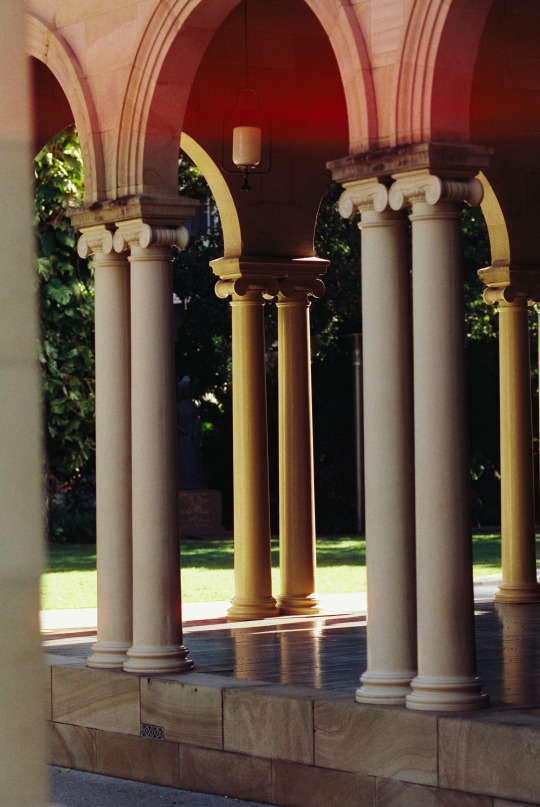
6 notes
·
View notes
Text
what do you mean we're running out of posts there are 3 right there for you to choose from
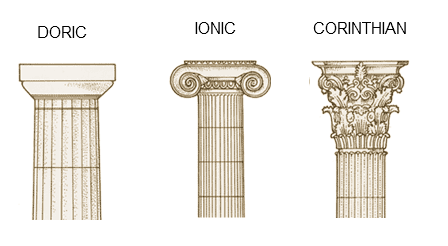
cast your votes!!
#also for the record.#fuck corinthian marry doric and kill ionic#corinthian is hot okay. that's a good fuck#corinthian will give me a great night#but doric? doric has a solid foudnation#doric is stable and honest and clear with its true self#doric will understand me and i will be able to understand doric#that's the perfect base for a marriage#ionic though? yikes#ionic's little curls look like a sneer#ionic does not have the honesty and solidity that doric does#while it also doesn't have the fun of corinthian#ionic is trying to act like it's special while not being willing to *actually* be special#it advertises itself as better than doric#but it can't match up to corinthian and it is snobby for it#doric would take good care of you#corinthian would give you a good time#ionic would make the night all about how good *it* is#so it's gotta go#side note once i had a project where i designed a cathedral and got to model several posts/pillars#it was a lot of fun#i'd like to do it again some day#but yeah. i have Opinions okay#eruadds#tag stories
38K notes
·
View notes
Text

1 note
·
View note
Text
Fantasy Guide to Interiors
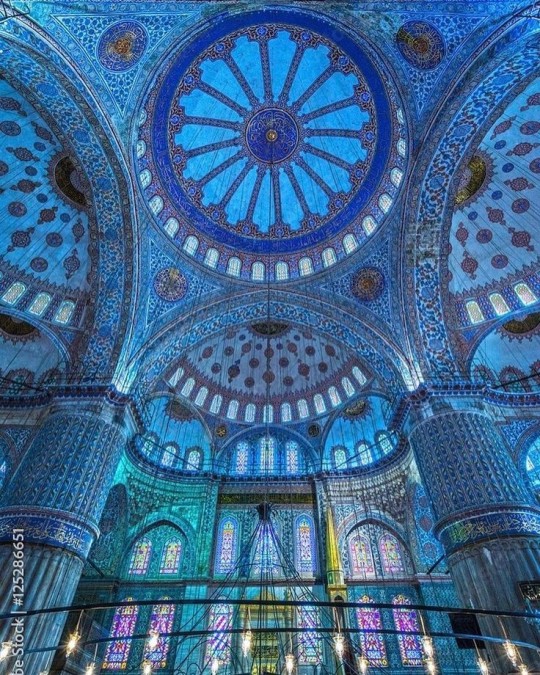
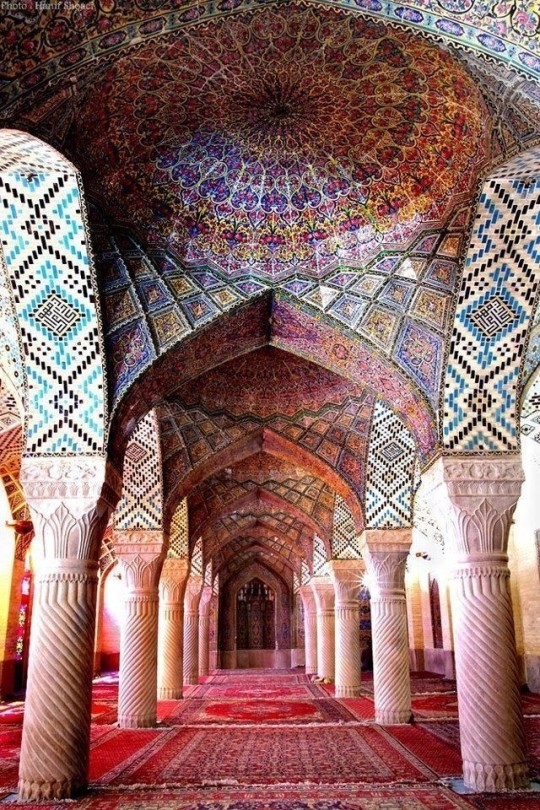
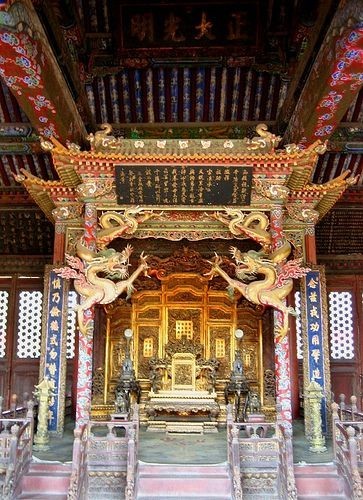
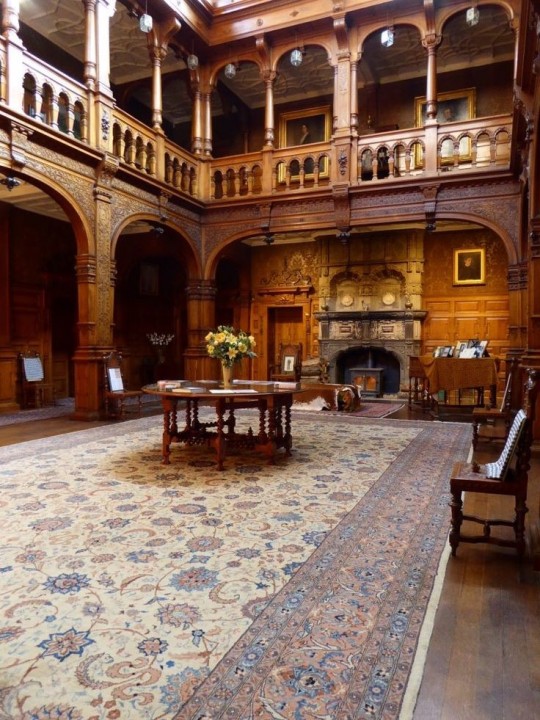
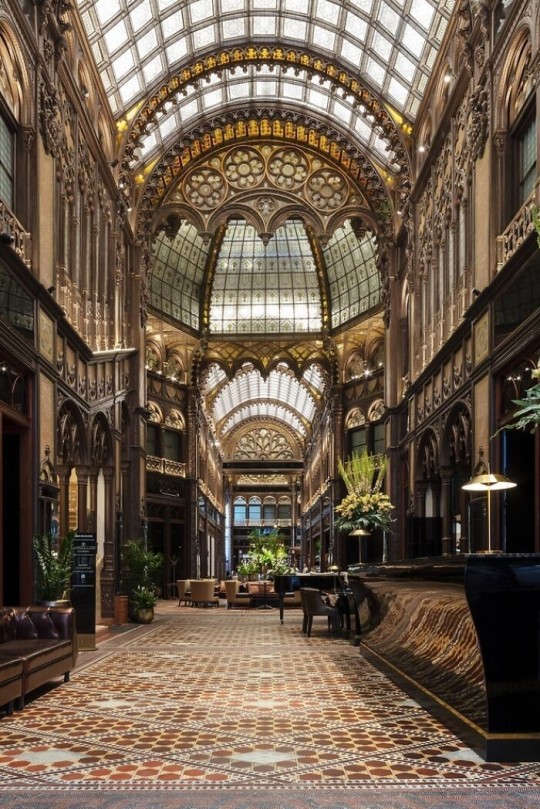
As a followup to the very popular post on architecture, I decided to add onto it by exploring the interior of each movement and the different design techniques and tastes of each era. This post at be helpful for historical fiction, fantasy or just a long read when you're bored.
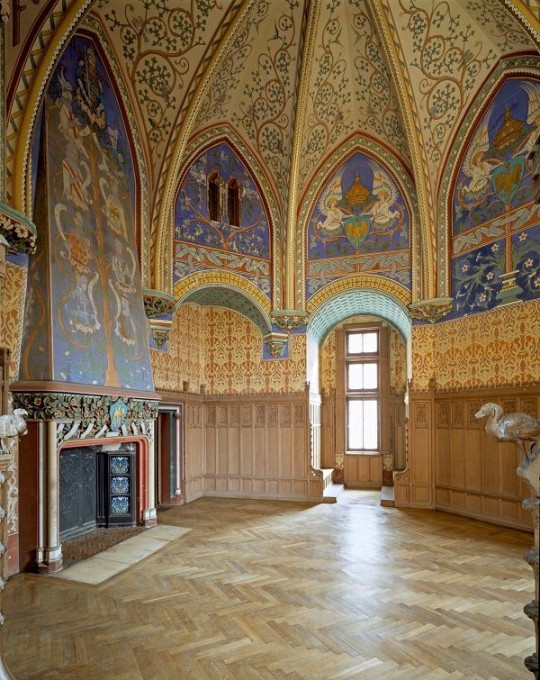
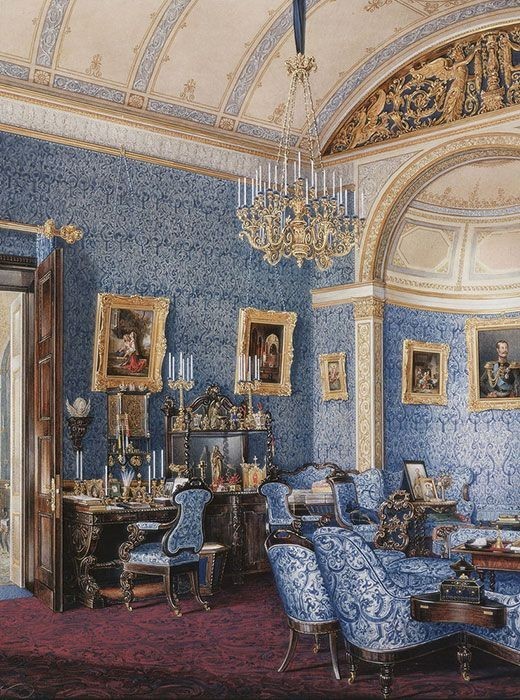
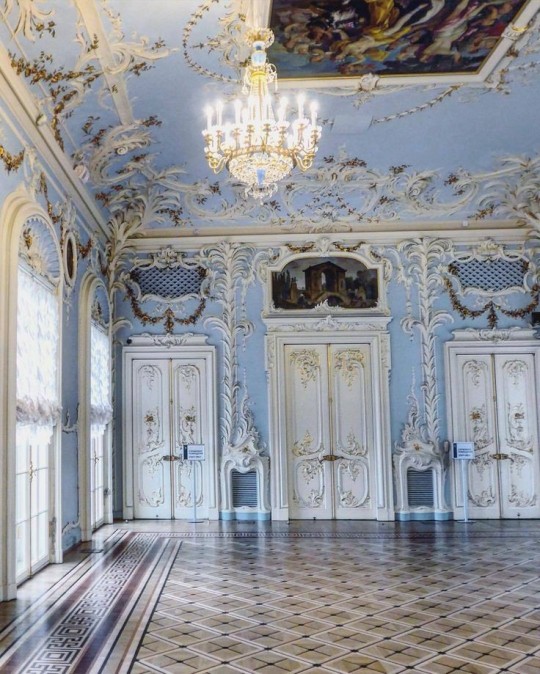
Interior Design Terms
Reeding and fluting: Fluting is a technique that consists a continuous pattern of concave grooves in a flat surface across a surface. Reeding is it's opposite.
Embossing: stamping, carving or moulding a symbol to make it stand out on a surface.
Paneling: Panels of carved wood or fabric a fixed to a wall in a continuous pattern.
Gilding: the use of gold to highlight features.
Glazed Tile: Ceramic or porcelain tiles coated with liquid coloured glass or enamel.
Column: A column is a pillar of stone or wood built to support a ceiling. We will see more of columns later on.
Bay Window: The Bay Window is a window projecting outward from a building.
Frescos: A design element of painting images upon wet plaster.
Mosaic: Mosaics are a design element that involves using pieces of coloured glass and fitted them together upon the floor or wall to form images.
Mouldings: ornate strips of carved wood along the top of a wall.
Wainscoting: paneling along the lower portion of a wall.
Chinoiserie: A European take on East Asian art. Usually seen in wallpaper.
Clerestory: A series of eye-level windows.
Sconces: A light fixture supported on a wall.
Niche: A sunken area within a wall.
Monochromatic: Focusing on a single colour within a scheme.
Ceiling rose: A moulding fashioned on the ceiling in the shape of a rose usually supporting a light fixture.
Baluster: the vertical bars of a railing.
Façade: front portion of a building
Lintel: Top of a door or window.
Portico: a covered structure over a door supported by columns
Eaves: the part of the roof overhanging from the building
Skirting: border around lower length of a wall
Ancient Greece
Houses were made of either sun-dried clay bricks or stone which were painted when they dried. Ground floors were decorated with coloured stones and tiles called Mosaics. Upper level floors were made from wood. Homes were furnished with tapestries and furniture, and in grand homes statues and grand altars would be found. Furniture was very skillfully crafted in Ancient Greece, much attention was paid to the carving and decoration of such things. Of course, Ancient Greece is ancient so I won't be going through all the movements but I will talk a little about columns.
Doric: Doric is the oldest of the orders and some argue it is the simplest. The columns of this style are set close together, without bases and carved with concave curves called flutes. The capitals (the top of the column) are plain often built with a curve at the base called an echinus and are topped by a square at the apex called an abacus. The entablature is marked by frieze of vertical channels/triglyphs. In between the channels would be detail of carved marble. The Parthenon in Athens is your best example of Doric architecture.
Ionic: The Ionic style was used for smaller buildings and the interiors. The columns had twin volutes, scroll-like designs on its capital. Between these scrolls, there was a carved curve known as an egg and in this style the entablature is much narrower and the frieze is thick with carvings. The example of Ionic Architecture is the Temple to Athena Nike at the Athens Acropolis.
Corinthian: The Corinthian style has some similarities with the Ionic order, the bases, entablature and columns almost the same but the capital is more ornate its base, column, and entablature, but its capital is far more ornate, commonly carved with depictions of acanthus leaves. The style was more slender than the others on this list, used less for bearing weight but more for decoration. Corinthian style can be found along the top levels of the Colosseum in Rome.
Tuscan: The Tuscan order shares much with the Doric order, but the columns are un-fluted and smooth. The entablature is far simpler, formed without triglyphs or guttae. The columns are capped with round capitals.
Composite: This style is mixed. It features the volutes of the Ionic order and the capitals of the Corinthian order. The volutes are larger in these columns and often more ornate. The column's capital is rather plain. for the capital, with no consistent differences to that above or below the capital.
Ancient Rome
Rome is well known for its outward architectural styles. However the Romans did know how to add that rizz to the interior. Ceilings were either vaulted or made from exploded beams that could be painted. The Romans were big into design. Moasics were a common interior sight, the use of little pieces of coloured glass or stone to create a larger image. Frescoes were used to add colour to the home, depicting mythical figures and beasts and also different textures such as stonework or brick. The Romans loved their furniture. Dining tables were low and the Romans ate on couches. Weaving was a popular pastime so there would be tapestries and wall hangings in the house. Rich households could even afford to import fine rugs from across the Empire. Glass was also a feature in Roman interior but windows were usually not paned as large panes were hard to make. Doors were usually treated with panels that were carved or in lain with bronze.
Ancient Egypt
Egypt was one of the first great civilisations, known for its immense and grand structures. Wealthy Egyptians had grand homes. The walls were painted or plastered usually with bright colours and hues. The Egyptians are cool because they mapped out their buildings in such a way to adhere to astrological movements meaning on special days if the calendar the temple or monuments were in the right place always. The columns of Egyptian where thicker, more bulbous and often had capitals shaped like bundles of papyrus reeds. Woven mats and tapestries were popular decor. Motifs from the river such as palms, papyrus and reeds were popular symbols used.
Ancient Africa
African Architecture is a very mixed bag and more structurally different and impressive than Hollywood would have you believe. Far beyond the common depictions of primitive buildings, the African nations were among the giants of their time in architecture, no style quite the same as the last but just as breathtaking.
Rwandan Architecture: The Rwandans commonly built of hardened clay with thatched roofs of dried grass or reeds. Mats of woven reeds carpeted the floors of royal abodes. These residences folded about a large public area known as a karubanda and were often so large that they became almost like a maze, connecting different chambers/huts of all kinds of uses be they residential or for other purposes.
Ashanti Architecture: The Ashanti style can be found in present day Ghana. The style incorporates walls of plaster formed of mud and designed with bright paint and buildings with a courtyard at the heart, not unlike another examples on this post. The Ashanti also formed their buildings of the favourite method of wattle and daub.
Nubian Architecture: Nubia, in modern day Ethiopia, was home to the Nubians who were one of the world's most impressive architects at the beginning of the architecture world and probably would be more talked about if it weren't for the Egyptians building monuments only up the road. The Nubians were famous for building the speos, tall tower-like spires carved of stone. The Nubians used a variety of materials and skills to build, for example wattle and daub and mudbrick. The Kingdom of Kush, the people who took over the Nubian Empire was a fan of Egyptian works even if they didn't like them very much. The Kushites began building pyramid-like structures such at the sight of Gebel Barkal
Japanese Interiors
Japenese interior design rests upon 7 principles. Kanso (簡素)- Simplicity, Fukinsei (不均整)- Asymmetry, Shizen (自然)- Natural, Shibumi (渋味) – Simple beauty, Yugen (幽玄)- subtle grace, Datsuzoku (脱俗) – freedom from habitual behaviour, Seijaku (静寂)- tranquillity.
Common features of Japanese Interior Design:
Shoji walls: these are the screens you think of when you think of the traditional Japanese homes. They are made of wooden frames, rice paper and used to partition
Tatami: Tatami mats are used within Japanese households to blanket the floors. They were made of rice straw and rush straw, laid down to cushion the floor.
Genkan: The Genkan was a sunken space between the front door and the rest of the house. This area is meant to separate the home from the outside and is where shoes are discarded before entering.
Japanese furniture: often lowest, close to the ground. These include tables and chairs but often tanked are replaced by zabuton, large cushions. Furniture is usually carved of wood in a minimalist design.
Nature: As both the Shinto and Buddhist beliefs are great influences upon architecture, there is a strong presence of nature with the architecture. Wood is used for this reason and natural light is prevalent with in the home. The orientation is meant to reflect the best view of the world.
Islamic World Interior
The Islamic world has one of the most beautiful and impressive interior design styles across the world. Colour and detail are absolute staples in the movement. Windows are usually not paned with glass but covered in ornate lattices known as jali. The jali give ventilation, light and privacy to the home. Islamic Interiors are ornate and colourful, using coloured ceramic tiles. The upper parts of walls and ceilings are usually flat decorated with arabesques (foliate ornamentation), while the lower wall areas were usually tiled. Features such as honeycombed ceilings, horseshoe arches, stalactite-fringed arches and stalactite vaults (Muqarnas) are prevalent among many famous Islamic buildings such as the Alhambra and the Blue Mosque.
Byzantine (330/395–1453 A. D)
The Byzantine Empire or Eastern Roman Empire was where eat met west, leading to a melting pot of different interior designs based on early Christian styles and Persian influences. Mosaics are probably what you think of when you think of the Byzantine Empire. Ivory was also a popular feature in the Interiors, with carved ivory or the use of it in inlay. The use of gold as a decorative feature usually by way of repoussé (decorating metals by hammering in the design from the backside of the metal). Fabrics from Persia, heavily embroidered and intricately woven along with silks from afar a field as China, would also be used to upholster furniture or be used as wall hangings. The Byzantines favoured natural light, usually from the use of copolas.
Indian Interiors
India is of course, the font of all intricate designs. India's history is sectioned into many eras but we will focus on a few to give you an idea of prevalent techniques and tastes.
The Gupta Empire (320 – 650 CE): The Gupta era was a time of stone carving. As impressive as the outside of these buildings are, the Interiors are just as amazing. Gupta era buildings featured many details such as ogee (circular or horseshoe arch), gavaksha/chandrashala (the motif centred these arches), ashlar masonry (built of squared stone blocks) with ceilings of plain, flat slabs of stone.
Delhi Sultanate (1206–1526): Another period of beautifully carved stone. The Delhi sultanate had influence from the Islamic world, with heavy uses of mosaics, brackets, intricate mouldings, columns and and hypostyle halls.
Mughal Empire (1526–1857): Stonework was also important on the Mughal Empire. Intricately carved stonework was seen in the pillars, low relief panels depicting nature images and jalis (marble screens). Stonework was also decorated in a stye known as pietra dura/parchin kari with inscriptions and geometric designs using colored stones to create images. Tilework was also popular during this period. Moasic tiles were cut and fitted together to create larger patters while cuerda seca tiles were coloured tiles outlined with black.
Chinese Interiors
Common features of Chinese Interiors
Use of Colours: Colour in Chinese Interior is usually vibrant and bold. Red and Black are are traditional colours, meant to bring luck, happiness, power, knowledge and stability to the household.
Latticework: Lattices are a staple in Chinese interiors most often seen on shutters, screens, doors of cabinets snf even traditional beds.
Lacquer: Multiple coats of lacquer are applied to furniture or cabinets (now walls) and then carved. The skill is called Diaoqi (雕漆).
Decorative Screens: Screens are used to partition off part of a room. They are usually of carved wood, pained with very intricate murals.
Shrines: Spaces were reserved on the home to honour ancestors, usually consisting of an altar where offerings could be made.
Of course, Chinese Interiors are not all the same through the different eras. While some details and techniques were interchangeable through different dynasties, usually a dynasty had a notable style or deviation. These aren't all the dynasties of course but a few interesting examples.
Song Dynasty (960–1279): The Song Dynasty is known for its stonework. Sculpture was an important part of Song Dynasty interior. It was in this period than brick and stone work became the most used material. The Song Dynasty was also known for its very intricate attention to detail, paintings, and used tiles.
Ming Dynasty(1368–1644): Ceilings were adorned with cloisons usually featuring yellow reed work. The floors would be of flagstones usually of deep tones, mostly black. The Ming Dynasty favoured richly coloured silk hangings, tapestries and furnishings. Furniture was usually carved of darker woods, arrayed in a certain way to bring peace to the dwelling.
Han Dynasty (206 BC-220 AD): Interior walls were plastered and painted to show important figures and scenes. Lacquer, though it was discovered earlier, came into greater prominence with better skill in this era.
Tang Dynasty (618–907) : The colour palette is restrained, reserved. But the Tang dynasty is not without it's beauty. Earthenware reached it's peak in this era, many homes would display fine examples as well. The Tang dynasty is famous for its upturned eaves, the ceilings supported by timber columns mounted with metal or stone bases. Glazed tiles were popular in this era, either a fixed to the roof or decorating a screen wall.
Romanesque (6th -11th century/12th)
Romanesque Architecture is a span between the end of Roman Empire to the Gothic style. Taking inspiration from the Roman and Byzantine Empires, the Romanesque period incorporates many of the styles. The most common details are carved floral and foliage symbols with the stonework of the Romanesque buildings. Cable mouldings or twisted rope-like carvings would have framed doorways. As per the name, Romansque Interiors relied heavily on its love and admiration for Rome. The Romanesque style uses geometric shapes as statements using curves, circles snf arches. The colours would be clean and warm, focusing on minimal ornamentation.
Gothic Architecture (12th Century - 16th Century)
The Gothic style is what you think of when you think of old European cathedrals and probably one of the beautiful of the styles on this list and one of most recognisable. The Gothic style is a dramatic, opposing sight and one of the easiest to describe. Decoration in this era became more ornate, stonework began to sport carving and modelling in a way it did not before. The ceilings moved away from barreled vaults to quadripartite and sexpartite vaulting. Columns slimmed as other supportive structures were invented. Intricate stained glass windows began their popularity here. In Gothic structures, everything is very symmetrical and even.
Mediaeval (500 AD to 1500)
Interiors of mediaeval homes are not quite as drab as Hollywood likes to make out. Building materials may be hidden by plaster in rich homes, sometimes even painted. Floors were either dirt strewn with rushes or flagstones in larger homes. Stonework was popular, especially around fireplaces. Grand homes would be decorated with intricate woodwork, carved heraldic beasts and wall hangings of fine fabrics.
Renaissance (late 1300s-1600s)
The Renaissance was a period of great artistry and splendor. The revival of old styles injected symmetry and colour into the homes. Frescoes were back. Painted mouldings adorned the ceilings and walls. Furniture became more ornate, fixed with luxurious upholstery and fine carvings. Caryatids (pillars in the shape of women), grotesques, Roman and Greek images were used to spruce up the place. Floors began to become more intricate, with coloured stone and marble. Modelled stucco, sgraffiti arabesques (made by cutting lines through a layer of plaster or stucco to reveal an underlayer), and fine wall painting were used in brilliant combinations in the early part of the 16th century.
Tudor Interior (1485-1603)
The Tudor period is a starkly unique style within England and very recognisable. Windows were fixed with lattice work, usually casement. Stained glass was also in in this period, usually depicting figures and heraldic beasts. Rooms would be panelled with wood or plastered. Walls would be adorned with tapestries or embroidered hangings. Windows and furniture would be furnished with fine fabrics such as brocade. Floors would typically be of wood, sometimes strewn with rush matting mixed with fresh herbs and flowers to freshen the room.
Baroque (1600 to 1750)
The Baroque period was a time for splendor and for splashing the cash. The interior of a baroque room was usually intricate, usually of a light palette, featuring a very high ceiling heavy with detail. Furniture would choke the room, ornately carved and stitched with very high quality fabrics. The rooms would be full of art not limited to just paintings but also sculptures of marble or bronze, large intricate mirrors, moldings along the walls which may be heavily gilded, chandeliers and detailed paneling.
Victorian (1837-1901)
We think of the interiors of Victorian homes as dowdy and dark but that isn't true. The Victorians favoured tapestries, intricate rugs, decorated wallpaper, exquisitely furniture, and surprisingly, bright colour. Dyes were more widely available to people of all stations and the Victorians did not want for colour. Patterns and details were usually nature inspired, usually floral or vines. Walls could also be painted to mimic a building material such as wood or marble and most likely painted in rich tones. The Victorians were suckers for furniture, preferring them grandly carved with fine fabric usually embroidered or buttoned. And they did not believe in minimalism. If you could fit another piece of furniture in a room, it was going in there. Floors were almost eclusively wood laid with the previously mentioned rugs. But the Victorians did enjoy tiled floors but restricted them to entrances. The Victorians were quite in touch with their green thumbs so expect a lot of flowers and greenery inside. with various elaborately decorated patterned rugs. And remember, the Victorians loved to display as much wealth as they could. Every shelf, cabinet, case and ledge would be chocked full of ornaments and antiques.
Edwardian/The Gilded Age/Belle Epoque (1880s-1914)
This period (I've lumped them together for simplicity) began to move away from the deep tones and ornate patterns of the Victorian period. Colour became more neutral. Nature still had a place in design. Stained glass began to become popular, especially on lampshades and light fixtures. Embossing started to gain popularity and tile work began to expand from the entrance halls to other parts of the house. Furniture began to move away from dark wood, some families favouring breathable woods like wicker. The rooms would be less cluttered.
Art Deco (1920s-1930s)
The 1920s was a time of buzz and change. Gone were the refined tastes of the pre-war era and now the wow factor was in. Walls were smoother, buildings were sharper and more jagged, doorways and windows were decorated with reeding and fluting. Pastels were in, as was the heavy use of black and white, along with gold. Mirrors and glass were in, injecting light into rooms. Gold, silver, steel and chrome were used in furnishings and decor. Geometric shapes were a favourite design choice. Again, high quality and bold fabrics were used such as animal skins or colourful velvet. It was all a rejection of the Art Noveau movement, away from nature focusing on the man made.
Modernism (1930 - 1965)
Modernism came after the Art Deco movement. Fuss and feathers were out the door and now, practicality was in. Materials used are shown as they are, wood is not painted, metal is not coated. Bright colours were acceptable but neutral palettes were favoured. Interiors were open and favoured large windows. Furniture was practical, for use rather than the ornamentation, featuring plain details of any and geometric shapes. Away from Art Deco, everything is straight, linear and streamlined.
#This took forever#I'm very tired#But enjoy#I covered as much as I could find#Fantasy Guide to interiors#interior design#Architecture#writings#writing resources#Writing reference#Writing advice#Writer's research#writing research#Writer's rescources#Writing help#Mediaeval#Renaissance#Chinese Interiors#Japanese Interiors#Indian interiors#writing#writeblr#writing reference#writing advice#writer#spilled words#writers
5K notes
·
View notes
Text
“Oh my god” Leo cackles “Oh my god Querido are you okay?”
“M’ good m’ good” Jason reassures, sitting up so he can kiss Leo all over his face. He may be chuffing out how pretty he is in Wolf at the same time, who's to say
When he pulls back to look at Leo he is backlit in the pre-sunset haze of the big arched window. It sets his hair into a glowing halo, laurels of light and fire, the entirety of him glowing and golden. Jason can't help but think he looks divine smiling down at him all gap-toothed and auburn, like the vistage of the gods who visit him and ask for his prayers, like he is made of more than mere flesh and bone and fire.
Jason could build such a temple to his Leo, one that all of Olympus would be envious of. Gold and copper and bronze, painted marble and intricate mosaic. Ionic pillars, open impediments, detailed entablature. And a skylight, so when Jason goes down on him on the alter the light will still catch his hair
It's probably sacrilege, even thinking about it in his position, but Jason doesn't care. Not when it's Leo, never when it's Leo. He kisses him all the same
79 notes
·
View notes
Text

CC list for The Columbarium🎦:
3D wall art || Candles holder || Chair || Cinder block pile/scaffolding || Clock || Counters || Cup clutter || Drink crate || Entrance plaque|| Floor dirt || Floor/light strip || Floor/wallpaper/fence/arch/pillar/square skylight || Floor || Floor (Day 12) || Folded chairs ||
Graffiti || Graffiti || Guitar amp || Guitar case || Industrial fan || Ionic wall arch and niche || Janitor cart || Light - ceiling - piano - wall ||
Parking square || Piano || Roof decor || Round skylight || Soil bag || Speaker || Stage wall panel || Tombstone/memorial plaque/wreath || Urn table (Day 5) || Water cooler || Window ||
🐹 🐹 🐹 🐹 🐹
Animated waterfall || Arasaka Logo || Chair with clothes || Cyberpunk wall decal || Light - ceiling - number || Sliding door || Wall duct || Wallpaper ||
29 notes
·
View notes
Note
As you approach the fox like creature, it lunges snarling with bared teeth. Before engaging in a full chase

The chase disturbs some creatures yet you persist, clawing through bushes.

You eventually find another path…. You look back, you had lost the fox amongst the previous shrubbery. However as you slow and the bushes start to spread again, you come across a temple.
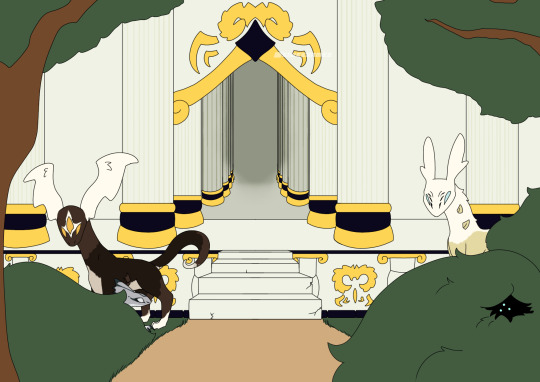
The marble glistens, the ionic features creating a sense of power as the sun is slowly setting. The pillars tower over you, yet in this area the area is much lighter. The creatures pause at the new presence. What will you do?
investigate the mysterious trio of eyes in the bushes
approach the creature on the right
approach the large creature on the left
approach the small shark like creature on the left
investigate the gold markings
screw it, enter the temple
8 barrels through bushes, struggling through thorns and leafs until he stumbles into a clearing, glad to be rid of the creature chasing him.
Wonderful. Just what 8 was hoping for, more issues.
Well, he should figure out where he was, he supposed. Maybe there was a- HOLY FUCK IS THAT A CASTLE??
8 stood shocked. Eyes locked on the temple, completely ignoring the creatures standing by. Enamoured by pillars reaching for the sky, cast in gold by the fading sunset.
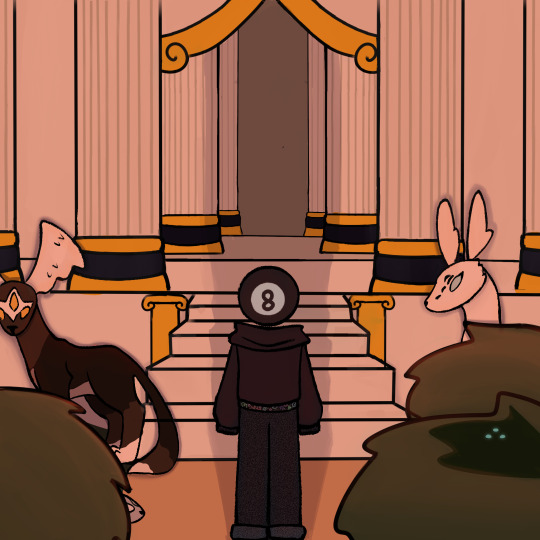
Shadows had begun to loom from tree’s and bushes, the day’s light quickly dwindling from the forest. 8 looked around, though he admitted it was a halfhearted search, and saw no better shelter for the night. 8 tensed slightly as he passed by the strange creatures at the entrance, smiling nervously at their stares, and scurried deeper into the temple.
…..
This didn’t count as tress-passing, right?
-First-
-Prev-
#undertale#undertale fandom#sans au#undertale au#undertale multiverse#magic 8 ball guy#oc#8ventures#collab with kiwee
14 notes
·
View notes
Note
Could I please get some fun facts about the glorious country of Greece?
Greece, or "Hellen" as her friends call her, is the country where mythology and pillars come from. Every child across the world is taught that pillars can be Doric, Ionic, or Cornthian, but not why this matters. They are also taught that Greece exists, but few learn why this is important either.
Greece includes many fictional islands such as Chryse, Phraxos, and Aeolia. It also has real islands such as Crete, where the Minoans once lived, Minoa, where some cretins once lived, and Lesbos, where Sappho lived. Sappho is regarded by historians as the first woman to have female friends, because many historians do not know what gay people are. Greece is known outside of such circles for having many gay people, being the second most popular LGBT dwelling place after only Tumblr itself.
Greece is known as the "Birthplace of Democracy" because it achieved the state in the early 1970s with something called a "Metapolitefsi," which is unrelated to the Dr. Seuss concept of the same name. The Metapolitefsi was needed after a right-wing military junta took over the country, much like in the United States in 2025.
121 notes
·
View notes
Text




24 / 100 days of productivity
I painted in the morning, had two lectures today, stressfully packed my bags to leave home and worried about not having anxiety meds to do so. also I walked around the city for like an hour when it rained, very cinematic
photos:
1) painting station, continuing with the commission because I can't wait to get this shit done
2) a diagram of an ionic temple (is that how you say it in english? the middle one from the three greek types of pillars and temples)
3) we have these tiny tables connected to the seat in front of you at our college, and they're so small and so close to the ground my back hurts most of the time, esp considering I already have scoliosis plus I wear a binder
4) packed bags. the backpack is half empty but I'm sure it will be heavy when I leave back to college on Monday. also pin badges reveal
#100 days of productivity#100dop#college studyblr#college student#studyblr#college#studyspo#art study#art#painting#oil painting#art history college#study space#study date#study session#student#university studyblr#academia#chaotic academia#light academia#dark academia
10 notes
·
View notes
Text
General imagery of the statues:
Leto - Seated, veiled (covering her head up to her crown), a wolf by her side and a stoat on her lap, and scepter in hand. Behind her an ionic pillar, and at her feet a bow and quiver full of arrows
Maia - With very wavy borderline curly hair left loose/down with a crown of stars, a cloud above her head, a sheep by her side along with a navigational wheel and salpinx (trumpet, important given her role as a herald), dove-winged (from her back) holding a dove in her hands, and a lyre at her feet
Peitho: arm extended in an inviting gesture, dove on her shoulder, a stephane in her other hand, a ball of twine at her feet right in front of a mirror resting beside it
Hemera - winged with a crown of the sun's rays, holding the sun in both hands (the size of a softball to us as a comparison), a horse by her side and a European robin on her shoulder, stepping on an ocean wave
Tykhe - A combination of her differing imagery, her holding a horn of plenty full of fruit and coins in one hand and rudder in her other, blindfolded wearing her turret-crown
20 notes
·
View notes
Text

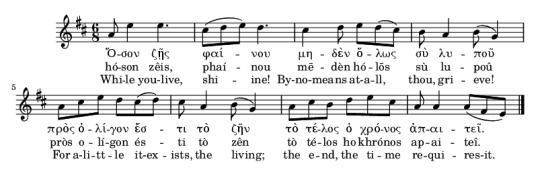
The Seikilos epitaph is the oldest surviving complete musical composition, including musical notation, being dated between the first and second century CE. The song — the melody of which is recorded, alongside its lyrics, in ancient Greek musical notation — was found engraved on a pillar (a stele) from the ancient Hellenistic town of Tralles, Turkey, in 1883. It is a Hellenistic Ionic song in either the Phrygian octave species or Iastian tonos. While older music with notation exists (for example the Hurrian songs), all of it is in fragments; the Seikilos epitaph is unique in that it is a complete, though short, composition.
5 notes
·
View notes
Text


Central Avenue, Grafton Hill, Dayton, OH (2) by Warren LeMay
Via Flickr:
Built in 1900, this Queen Anne-style house features a red brick exterior, a rough-hewn stone base, one-over-one double-hung windows, a semi-circular two-story front bay window, a hipped roof with front and side gables clad in scalloped wooden shingles, a corner front porch with ionic brick pillars and arched openings, and two-story bay windows on the side facades. The house is a contributing structure in the Steele’s Hill-Grafton Hill Historic District, listed on the National Register of Historic Places in 1986, and increased to its present size in 2023.
3 notes
·
View notes
Text

cutting some Ancient Greek Ionic order pillars
2 notes
·
View notes
Text
Excuse me waiter my full name is,
Ionic "im already in cool mode" "tutorial character" "i will get a color role if you beat the path of pain in hollow knight" " @king-of-fuffies do radiant gruz mother" "ADMIN WATCH DAWGS HES TRY TO CHANGE MY COLOR WITHOUT MY CONSENT" "THERE WAS NO BASEMENT! IT WAS THE SECOND FLOOR OF MY HOUSE!" "i don't know what a bong is. WHAT THE FUCK IS A BONG" "there should be a suggestion box on this server. THEY CALL IT THE LITTERBOX" "im going to take an emergency shit" "YOU FORGOT TO PICK UP THE LEGO ON THE FLOOR" "i was the best man AND the pope" "does this look like the face of mercy" "you own him therefore you are responsible for them" "the" "you are the father" "if im a moth do i deal 2 masks of damage" "my body is ready" "if it needs a color role you'll never take me alive" "it was funny but also" "extremely" "extremely" "extremely" "extremely" "cursed" "carleah, not pillar john" "he soaks up more damage that way" "everyone has a horror game dopelganger" "Ruck" "Fuffy get your man’s, He exploded" "I need to find Carleah and steal their liver to take their ability to open the thousand-one year door" "Only then Keane McZupp will explode turning into a bagel at 3 am after ordering the among us happy meal" "ethereal toasters are the only thing that can control toast" "all toasters have secret potato slots" "he is several parallel universes behind" "the internet is a giant mcdonalds" "I’m a ocean" "i cant even throw you, much less pick you up" "he didn't know FedEx had a stand" "funny words magic man" "nothing to see here" "Za Waldo!" "Remember besties, don’t blow stuff in peoples faces unless it’s air kisses, or darts!" "fuffy left me in the car for 4 hours" "There are no mistakey wakeys" "Fuffy I’m like 300% sure you are a pony" "He was pouring out lemonade into the abyss" "**Fuffy was ejected. One Sussy Boy remains**" "The abyss was thirsty" "A funny" "I am not safe for clothes driers" "Can your wall eat a lawn mower" "squirrels do not die at terminal velocity. also theres lizards that fire blood from their eyes as a defense mechanicism" “I bowl like my sexuality: Not straight” "short" "You have 5 minutes to live" "IM A FUCKING CAR KEANE" "\*I mean edgy I mean edgy I mean edgy I mean Edgy" "What is this mario party" "no" "brain issue" "i even crashed your computer" “Seduce the Skeleton!” “Kentucky Fried [REDACTED]” "im scared of my own pasta power sometimes" "He becomes noise pizza tower" "Anything is possible, with the power of Crazy Dave’s Twinkysdinkys" "he eats the golf ball and dies" “Everything is a weapon if you hit someone hard enough” "Happy tale of under unde of tale tdat" "fuffy brain melt. he die" "why are you in my chem textbook" "where is the dinnerbone cat." "Everything is a table." "Was schmoving too hard and bust my ass." "That was just my normal attack. Deploying Unexplainable Gifs" "I am immune to gachas. And they’re immune to me." "Did you know you don’t have organs. The constitution I wrote myself says so." "Go to Burger King" "My attack was so powerful discord crashed" "Fuffy open the door I have 3 sad poems and one sparkler" "If you rearrange final you get fianl" "stop watching cringe and beat the shit out of every boss." “Alright, you’re getting stepped on.” "i am the bio-weapon in youe walls" "*Hello my name is now temporarily humphrey*" "Also I beat up a toaster today," "we got a job to do" Slime
6 notes
·
View notes